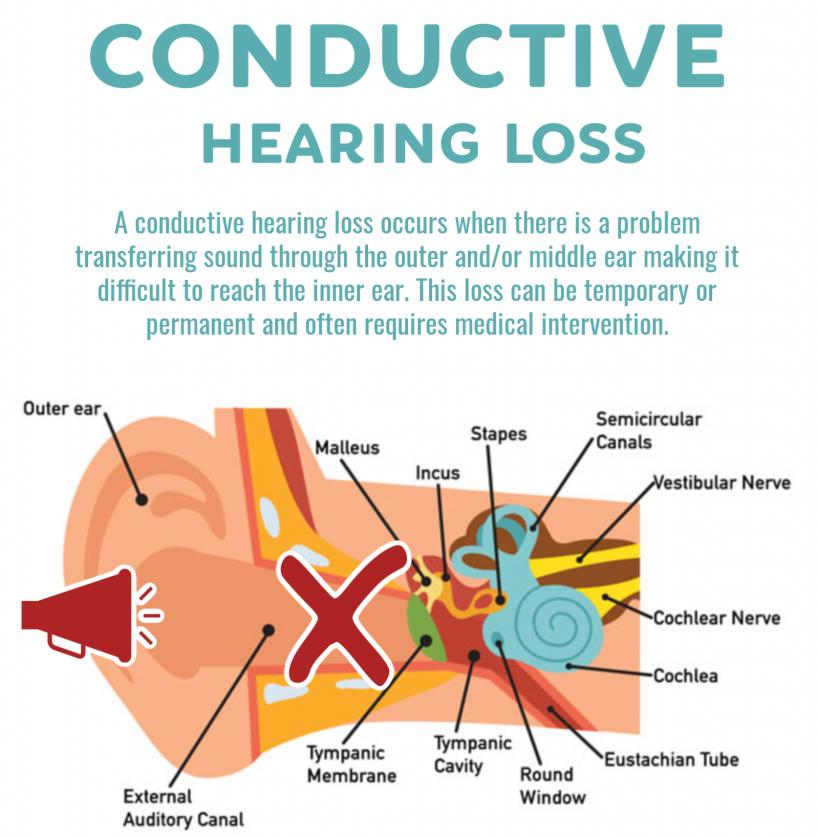The Impact of Ear Infections on Speech-Language Development
What is an ear infection?
An ear infection, also known as otitis media (OM), occurs when fluid gets trapped in the middle ear behind the eardrum. OM is the most common childhood illness; five out of six children will have at least one ear infection by their third birthday. Fluid in the middle ear can make it harder to hear, so frequent ear infections may lead to speech and language delays.
Why are kids so susceptible to ear infections?
The eustachian tube is a small passageway that connects the throat to the middle ear and regulates pressure in the ear. Children are more likely to get ear infections than adults because their eustachian tubes are shorter, narrower, and more horizontal. This makes it difficult for fluid to drain out of the ear. The fluid may become filled with bacteria and push on the eardrum, causing it to become red, swollen, and sore.
Ear Infections and Hearing
Fluid trapped in the middle ear can cause conductive hearing loss. This may make things sound like they are underwater. Your child's hearing loss may go away once the ear infection is treated and fluid drains from the middle ear. Whenever there is fluid in their middle ear, they may miss hearing sounds and words.
Signs of ear infection in your child:
Tugging or pulling at their ear
Crying more than usual
Fever
Not responding to sounds
Trouble sleeping
Fluid draining from their ear
I think my child has an ear infection. What should I do?
If you have concerns about your child’s ear infection, it may be necessary to seek medical treatment by a doctor or ENT. Frequent ear infections may also require further treatment by an audiologist and a speech-language therapist. The audiologist can test your child’s hearing and middle ear function while the speech-language therapist can help with any delays/difficulties with speech or language.
Ear Infections and Language Development
Fluid in the middle ear can make it harder to hear, so frequent ear infections can lead to speech and language delays. There is a relationship between OM in the early years of a child's life and delays in later language and literacy development. Children with a history of ear infections have been found to have decreased development of phonological awareness skills, semantic skills, and reading ability.
Phonological awareness skills – the ability to recognize and manipulate spoken parts of words and sentences.
Semantic skills – the ability to understand meaning in different types of words, phrases, narratives, signs and symbols and the meaning they give to the speaker and listener.
Reading ability – the ability to understand sound structures of words when learning to read.
Looking for support for your child’s speech or language development? Reach out to us for an appointment to get additional support.
Resources:
American Speech-Language-Hearing Association. (n.d.). Ear infections (otitis media). American Speech-Language-Hearing Association. Retrieved May 1, 2023, from https://www.asha.org/public/hearing/otitis-media/#hearing
U.S. Department of Health and Human Services. (n.d.). Ear infections in children. National Institute of Deafness and Other Communication Disorders. Retrieved May 2, 2023, from https://www.nidcd.nih.gov/health/ear-infections-children
U.S. National Library of Medicine. (n.d.). Eustachian tube: Medlineplus medical encyclopedia image. MedlinePlus. Retrieved May 2, 2023, from https://medlineplus.gov/ency/imagepages/19596.htm
Winskel, H. (2006). The effects of an early history of otitis media on children’s language and literacy skill development. British Journal of Educational Psychology, 76(4), 727–744. https://doi.org/10.1348/000709905X68312

